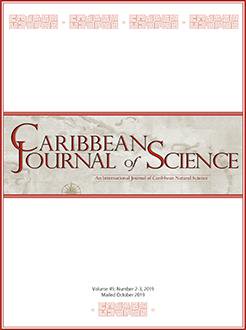Invasive predators are among the most detrimental biological invaders of island ecosystems. However, information detailing the effectiveness of trapping for these invasive species is often underreported. Here, we quantified the influence of environmental features on mongoose (Herpestes auropunctatus) trapping success across five forest types in eastern Puerto Rico. Specifically, we evaluated how canopy and understory cover, woody debris, proximity metrics, and elevation influenced the likelihood of capturing a mongoose at a trap location. The likelihood increased in habitats that were farther from rivers (P = 0.003), farther from recreation areas (P = 0.06), closer to trails (P = 0.11), and closer to coastal shoreline (P = 0.01). Optimizing capture success via trap placement can help reduce both trapping effort and costs. Thus, our results can be used to prioritize locations for future trapping as a means to improve capture success.
How to translate text using browser tools
22 October 2019
Environmental features associated with trapping success of mongoose (Herpestes auropunctatus) in eastern Puerto Rico
Diana Guzmán-Colón,
Gary J. Roloff,
Robert A. Montgomery
ACCESS THE FULL ARTICLE

Caribbean Journal of Science
Vol. 49 • No. 2-3
October 2019
Vol. 49 • No. 2-3
October 2019
Caribbean Islands
Herpestes auropunctatus
invasive species
mongoose
Puerto Rico
trap placement




